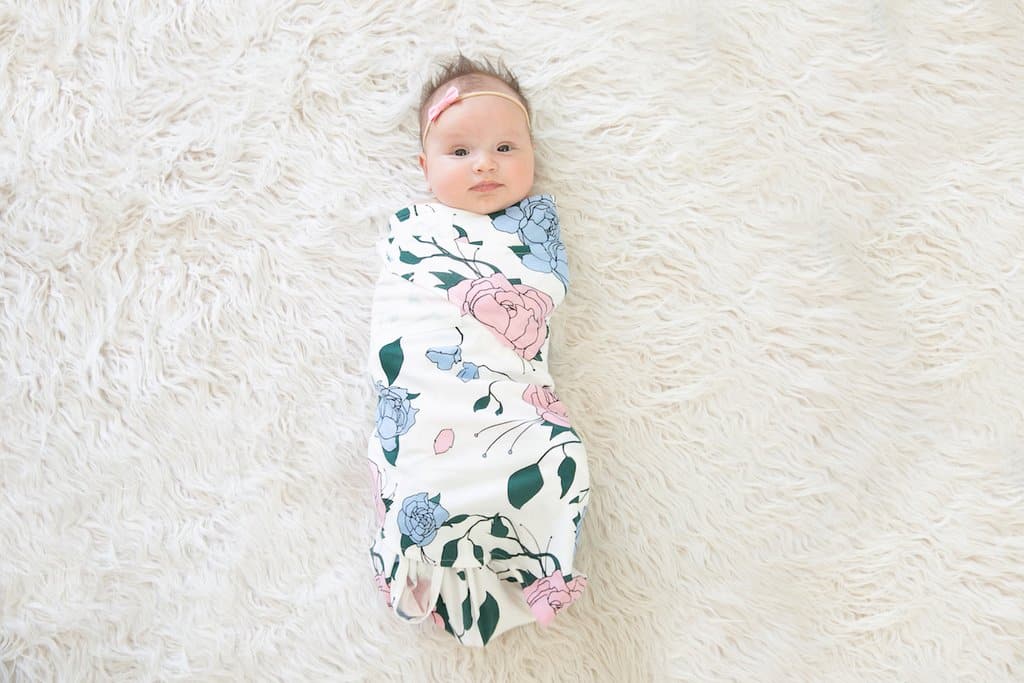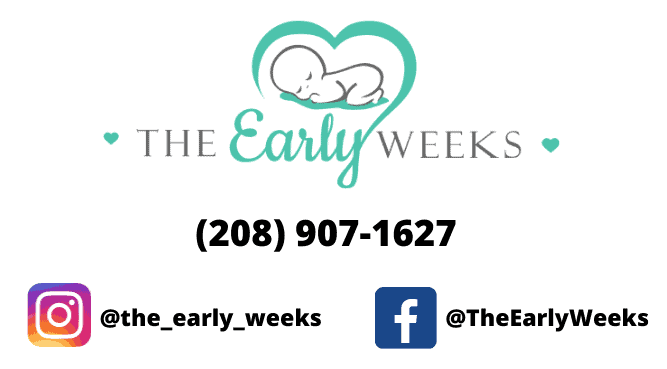
When Should You Stop Swaddling Your Baby?
If you are reading this, chances are you are a new parent and trying to understand what is the right age to stop swaddling your baby. I’m glad you are here, because there is a lot of information out there on Google Land, in parenting groups or safe sleep groups and not all of it is accurate.
As a Newborn Care Specialist and someone that has many thousands of hours working with babies (12,000+), I am going to unpack all of this for you today and help you understand and know when is the right time to stop swaddling your baby.
The Confusion About When to Stop Swaddling Your Baby
Here’s the deal. The American Academy of Pediatrics has these Safe Sleep Guidelines for infant sleep. The Guidelines were established to help prevent the occurrence of Sudden Infant Death Syndrome (SIDS) and Sudden Unexpected Infant Deaths (SUID). Since the implementation of these guidelines, SIDS and SUIDS rates have dropped significantly, which is obviously great!
Now, there is this one Doctor on the AAP safe sleep guidelines task force and she is the lead author. Her name is Dr. Rachel Moon. It is her OPINION that babies should not be swaddled past 8 weeks of age. Keep in mind, that it is NOT the official stance or guideline recommendation of the American Academy of Pediatrics.
To further confuse and parent shame you, hop onto a few safe sleep groups and sit back and watch the comments. Some of these groups are awful in the terms of making parents feel bad for continuing to swaddle their baby past 8 weeks. My colleagues and I either drop out of these groups completely or never comment.
The Importance of Swaddling
The primary reason we swaddle babies is because they are supposed to be placed on their back to sleep, per the AAP guidelines. Being on their back activates the MORO or STARTLE reflex. This reflex is sometimes still strong until 4-6 months of age and can HUGELY interfere with a baby’s ability to sleep, thus causing sleep deprivation for his or her parents. For a baby that doesn’t have good sleep fundamentals on board yet, the startle reflex will cause significant interruptions to sleep.
Guideline Are Just That, Guidelines
Often what happens when parents unswaddle their baby too early, is that UNSAFE sleep practices fall into place as a result of the sleep deprivation. A few examples being:
- A parent is holding their baby to get them to sleep and falls asleep with them in bed or a chair. Babies get dropped or suffocated this way.
- Parents result in using devices not intended for sleep – swings, bouncer chairs, Doc A Tots and the like. These props are another hurdle that has to be eliminated before the baby can truly learn independent sleep skills and they are not approved for safe sleep.
So as a result of trying to unswaddle their baby before the baby is truly ready, other unsafe sleep practices can come into play defeating the original purpose of the guidelines in the first place.
Case Study
I began working with a sleep training client this week. Baby B just turned 5 months old and is about 12.5 lbs (petite thing). Her parents had her in a one arm out swaddle. On the first day of training we put her down for her first nap and after struggling for a bit I told the mom that I thought we needed to swaddle her. The biggest indication being that she would start to relax and then throw her arms out to the side, upsetting and waking her sweet self up.
After we swaddled her, she fell asleep on her own in 4 minutes, no crying. The second nap we swaddled her from the get go, and she fell asleep in 5 minutes, no crying. Powerful stuff! We will begin the transition process in a few days. Taking this step back was important for this particular baby. Not all babies at 5 months old should or need to be swaddled.
Safe Sleep Practices
- Follow the ABC’s of safe sleep:
- – Always place baby ALONE on their BACK for sleep and in a CRIB or bassinet.
- Temperature should be 68-72 degrees
- No smoking caregivers or around the baby, ever.
- Do not allow baby to overheat
- Do not make modifications to the Crib (no bumpers, blankets, stuffed animals etc.). Do not elevate the crib, unless your pediatrician tells you to do so.
- Avoid falling asleep while holding your baby or having them in bed with you.
Safe Swaddling
- Swaddle your baby until they indicate they are ready to roll. Tummy to back is not nearly as important as the weight of their head carries them over. Back to tummy is what to watch for.
- Swaddle your baby’s arms snuggly. A lose swaddle is dangerous and a suffocation risk!
- Do not swaddle the hips tightly. Hips should be able to move and make a “frog” position freely.
- Use transition swaddles around 3-4 months of age to help your baby learn to get comfortable with more movement. It is ideal to begin working on sleep fundamentals, before unswaddling fully.
- Create a “V” shape with the swaddle on your baby’s chest. This will help prevent the fabric from working up by their face.
Bottom Line
Babies can do well being unswaddled earlier in life, but solid sleep fundamentals need to be established first AND the baby needs to be worked out of it appropriately. Also, remember that the guidelines are just that, guidelines. You as parents need to do what is best for your family. Do your research and be comfortable with your decision.
If you have questions about safe sleep practices or swaddling for you baby, please reach out. We would love to help! www.TheEarlyWeeks.com or contact us HERE.
